Discover 35 hidden attractions, cool sights, and unusual things to do in Milan (Italy). Don't miss out on these must-see attractions: Milan Cathedral, Church of Holy Mary of Grace, and Gallerie d'Italia. Also, be sure to include Biblioteca del Museo civico di storia naturale in your itinerary.
Below, you can find the list of the most amazing places you should visit in Milan (Lombardy).
Table of Contents
Milan Cathedral

Also known as: Duomo di Milano
Massive Gothic cathedral with artworks. The Milan Cathedral, or Metropolitan Cathedral-Basilica of the Nativity of Saint Mary, is the cathedral church of Milan, Lombardy, Italy. Dedicated to the Nativity of St Mary, it is the seat of the Archbishop of Milan, currently Archbishop Mario Delpini.
The cathedral took nearly six centuries to complete: construction began in 1386, and the final details were completed in 1965. It is the largest church in the Italian Republic—the larger St. Peter's Basilica is in the State of Vatican City, a sovereign state—and possibly the second largest in Europe and the third largest in the world (its size and position remains a matter of debate).[1]
Address: Piazza del Duomo, 20121 Milan (Centro Storico)
Church of Holy Mary of Grace
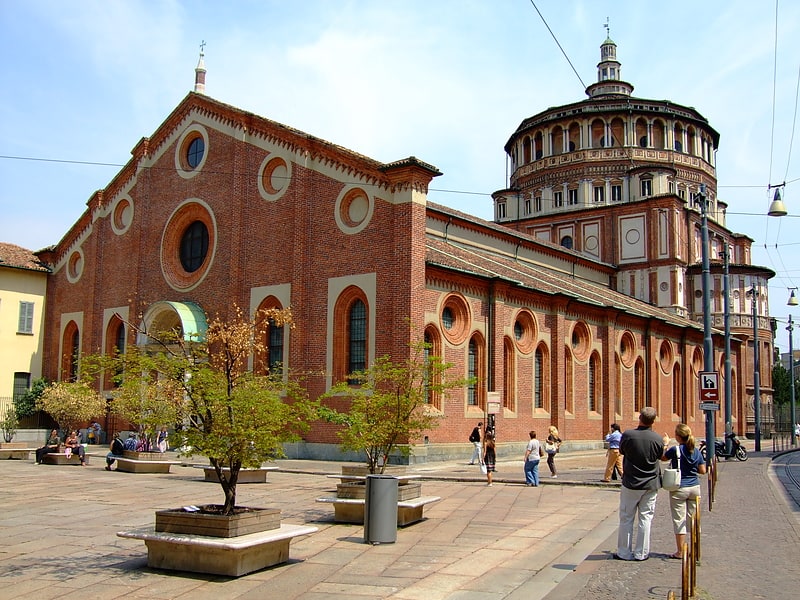
Also known as: Chiesa di Santa Maria delle Grazie
Church with Da Vinci's The Last Supper. Santa Maria delle Grazie is a church and Dominican convent in Milan, northern Italy, and a UNESCO World Heritage Site. The church contains the mural of The Last Supper by Leonardo da Vinci, which is in the refectory of the convent.[2]
Address: Piazza di Santa Maria delle Grazie, 20123 Milano (Centro Storico)
Gallerie d'Italia
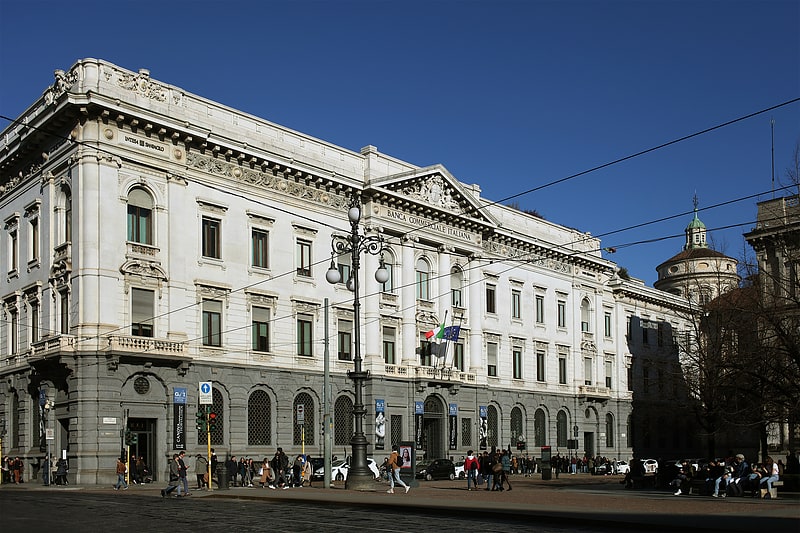
Also known as: Gallerie di piazza Scala
Museum. The Gallerie di Piazza Scala is a modern and contemporary museum in Milan, Italy. Located in Piazza della Scala in the Palazzo Brentani and the Palazzo Anguissola, it hosts 195 artworks from the collections of Fondazione Cariplo with a strong representation of nineteenth century Lombard painters and sculptors, including Antonio Canova and Umberto Boccioni. A new section was opened in the Palazzo della Banca Commerciale Italiana on October 25, 2012 with 189 art works from the twentieth century.
During the 2017 Corporate Art Awards Ceremony hosted by the President of the Italian Republic Sergio Mattarella at the Quirinal Palace, Gallerie di Piazza Scala received a special award as “Patron of the XXI century”.[3]
Address: Piazza della Scala, 6, 20121 Milano (Centro Storico)
Biblioteca del Museo civico di storia naturale
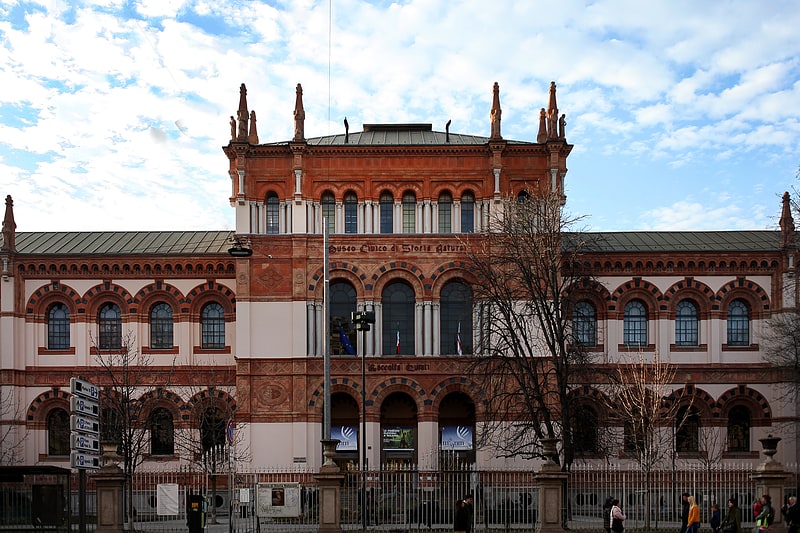
Also known as: Museo civico di storia naturale di Milano
Exhibitions of human and animal biology. The Museo Civico di Storia Naturale di Milano is a museum in Milan, Italy. It was founded in 1838 when naturalist Giuseppe de Cristoforis donated his collections to the city. Its first director was Giorgio Jan.
The Museum is located within a 19th-century building in the Indro Montanelli Garden, near the historic city gate of Porta Venezia. The structure was built between 1888 and 1893 in Neo-Romanesque style with Gothic elements.
The museum is divided into five different permanent sections: Mineralogy (with a large collection of minerals from all over the world); Paleontology (with several fossils of dinosaurs and other prehistoric organisms); Natural History of Man (dedicated to the origins and evolution of humans with a particular attention to the relationship of the latter with the environment); Invertebrate Zoology (dedicated to mollusks, arthropods and entomology); and Vertebrate Zoology (dedicated to vertebrates, both exotic and European).
The museum also exhibits the largest Italian collection of full size dioramas (over 100) that allow visitors to observe some peculiar aspects of various ecosystems.[4]
Address: Corso Venezia, 55, 20121 Milano (Centro Storico)
Via Monte Napoleone
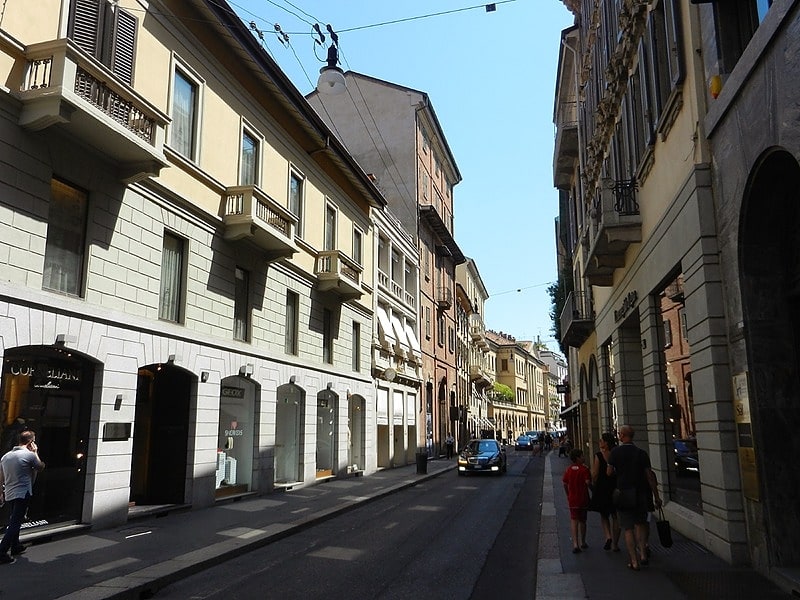
Street in Milan, Italy. Via Monte Napoleone, also spelled Via Montenapoleone, is an upscale shopping street in Milan, Italy, and Europe's third most expensive street. It is famous for its ready-to-wear fashion and jewelry shops, and for being the most important street of the Milan fashion district known as the Quadrilatero della moda, where many well-known fashion designers have high-end boutiques. The most exclusive Italian shoemakers maintain boutiques on this street.
In 2009, architect Fabio Novembre designed a months-long art installation, titled Per fare un albero, ‘To make a tree’ in conjunction with the city of Milan's Department of Design, Events and Fashion and Fiat — featuring 20 full-size fiberglass planter replicas of the company's 500C cabriolet along Via Monte Napoleone.
In 2002, the Street Association started a media project including the Radio and the Portal, in order to relaunch the Made in Italy brand. Sponsored by the Department of Fashion, Tourism and Major Events of the Municipality of Milan, Italy Fashion System, and Assomoda, today it is the first instrument of revival and information on Made in Italy worldwide.[5]
Address: Via Monte Napoleone, 20121 Milan (Centro Storico)
Pinacoteca di Brera

Art museum specialising in Italian art. The Pinacoteca di Brera is the main public gallery for paintings in Milan, Italy. It contains one of the foremost collections of Italian paintings, an outgrowth of the cultural program of the Brera Academy, which shares the site in the Palazzo Brera.[6]
Address: Via Brera, 28, 20121 Milano (Centro Storico)
Corso Buenos Aires
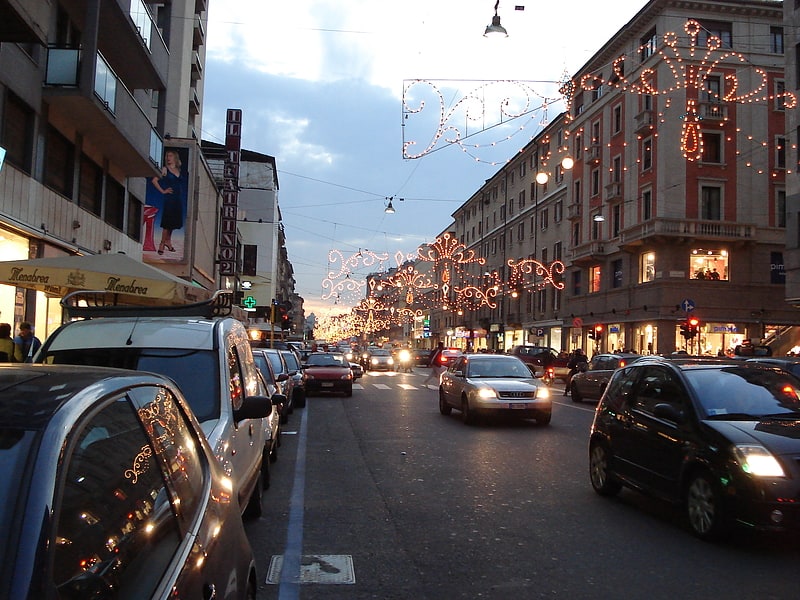
Street in Milan, Italy. Corso Buenos Aires is a major street in north-eastern Milan, Italy. With over 350 shops and outlets, it features the highest concentration of clothing stores in Europe. The architecture of the area is mostly late 19th- and 20th-century style; the street and its surroundings are pointed with several neo-classical and art nouveau buildings.[7]
Address: Corso Buenos Aires, Milan (Zona 3)
Sforza's Castle
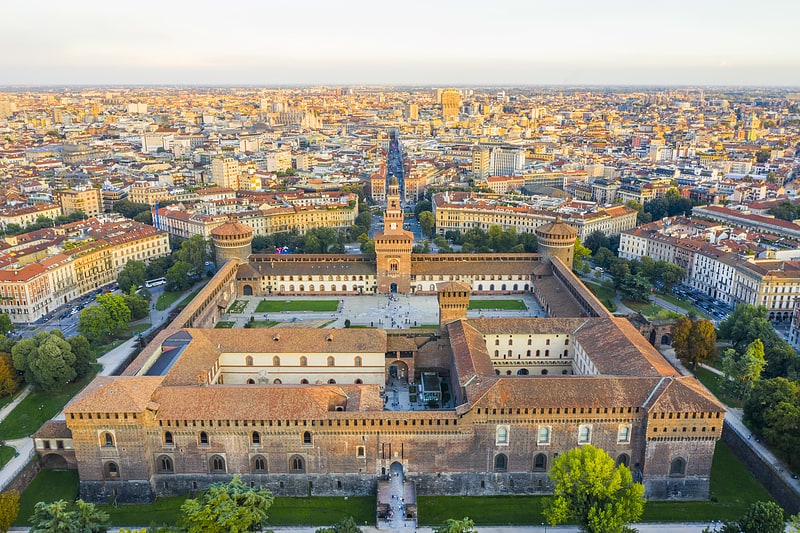
Also known as: Castello Sforzesco
Medieval fortress housing art treasures. The Castello Sforzesco is a medieval fortification located in Milan, northern Italy. It was built in the 15th century by Francesco Sforza, Duke of Milan, on the remnants of a 14th-century fortification. Later renovated and enlarged, in the 16th and 17th centuries it was one of the largest citadels in Europe. Extensively rebuilt by Luca Beltrami in 1891–1905, it now houses several of the city's museums and art collections.[8]
Address: Piazza Castello, 20121 Milano (Centro Storico)
Museum of Musical Instruments
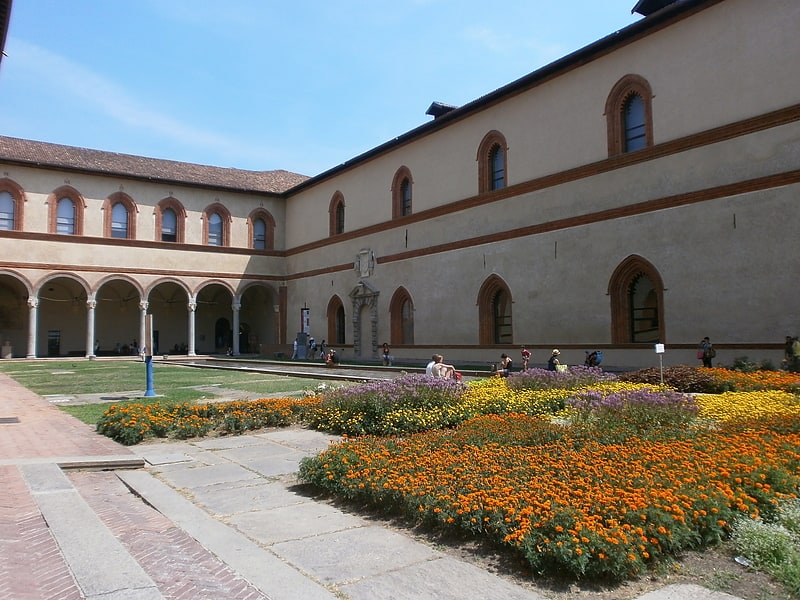
Also known as: Museo degli strumenti musicali
Museum in Milan, Italy. The Museum of Musical Instruments of Milan exhibits over 700 musical instruments from the fifteenth to twentieth centuries with particular attention to Lombard instruments. The collection contains plucked instruments, Lombard and Cremonese violins, hunting horns, numerous wood instruments, bassoons, pianos and some ancient organs. In particular the Cremonese lutherie is appreciated all over the world for the high quality of its musical instruments. The museum also displays the equipment of the former Studio di fonologia musicale di Radio Milano.
In 2000 a donation by the Fondazione Antonio Monzino added 79 musical instruments, made between the 18th and 20th century, to the civic collection; they had been collected by the Monzino family. These musical instruments represent the strong tradition of Lombard lutherie.
The museum is situated in the Sforza Castle complex that also includes The Museum of Ancient Art, the Pinacotheca, the Applied Arts Collection and the Egyptian Museum (that includes the prehistoric sections of the Archaeological Museum of Milan).[9]
Address: Piazza Castello, 20121 Milano (Centro Storico)
Piazza del Duomo
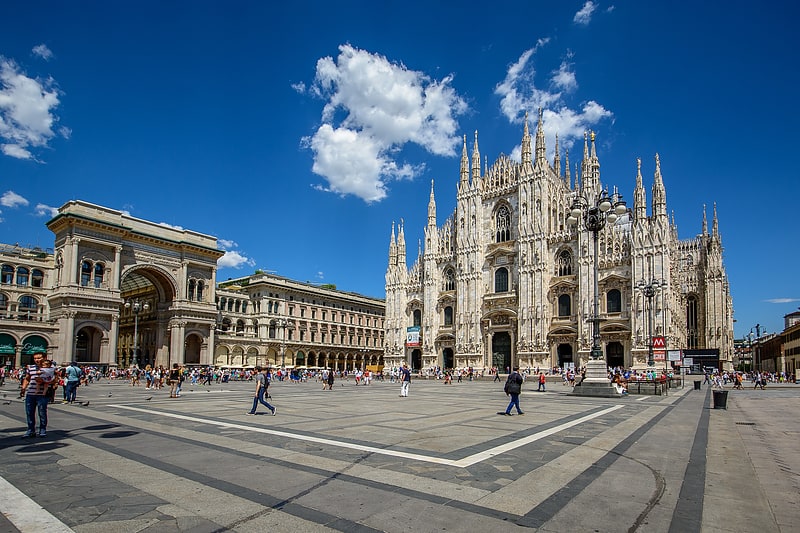
Piazza del Duomo is the main piazza of Milan, Italy. It is named after, and dominated by, Milan Cathedral. The piazza marks the center of the city, both in a geographic sense and because of its importance from an artistic, cultural, and social point of view. Rectangular in shape, with an overall area of 17,000 m2, the piazza includes some of the most important buildings of Milan, as well some of the most prestigious commercial activities, and it is by far the foremost tourist attraction of the city.
While the piazza was originally created in the 14th century and has been gradually developing ever since (along with the Duomo, which took about six centuries to complete), its overall plan, in its current form, is largely due to architect Giuseppe Mengoni, and dates to the second half of the 19th century. The monumental buildings that mark its sides, with the main exception of the Duomo itself and the Royal Palace, were introduced by Mengoni's design; the most notable of Mengoni's addition to the piazza is the Galleria Vittorio Emanuele II arcade.[10]
Address: Piazza del Duomo, Milan (Centro Storico)
Leonardo3 Museum

Leonardo3 is an interactive museum and exhibition center at Galleria Vittorio Emanuele II, Piazza della Scala, Milano, Italy. The museum is devoted to Italy’s notable personality Leonardo da Vinci and portrays him both as an artist and inventor.[11]
Address: Galleria Vittorio Emanuele II, 20121 Milano (Centro Storico)
San Siro

Also known as: Stadio Giuseppe Meazza
Stadium for A.C. Milan and Inter Milan. Stadio Giuseppe Meazza, commonly known as San Siro, is a football stadium in the San Siro district of Milan, Italy, which is the home of Internazionale and A.C. Milan. It has a seating capacity of 80,018, making it one of the largest stadiums in Europe, and the largest in Italy.
On 3 March 1980, the stadium was named in honour of Giuseppe Meazza, the two-time World Cup winner (1934, 1938) who played for Inter and briefly for Milan in the 1920s, 1930s, and 1940s and served two stints as Inter's manager.
San Siro is a UEFA category four stadium. It hosted three games at the 1934 FIFA World Cup, six games at the 1990 FIFA World Cup, three games at the UEFA Euro 1980, and four European Cup finals, in 1965, 1970, 2001 and 2016. The stadium will also host the opening ceremony of the 2026 Winter Olympics of Milan and Cortina d'Ampezzo.[12]
Address: Milan, Via Piccolomini, 5, 20151
Museo del Novecento

Museum in Milan, Italy. The Museo del Novecento is a museum of twentieth-century art in Milan, in Lombardy in northern Italy. It is housed in the Palazzo dell'Arengario, near Piazza del Duomo in the centre of the city.
The museum opened in December 2010. It displays about 400 works, most of them Italian, from the twentieth century.[13]
Address: Piazza del Duomo, 8, 20123 Milano (Centro Storico)
Alfa Romeo Museum
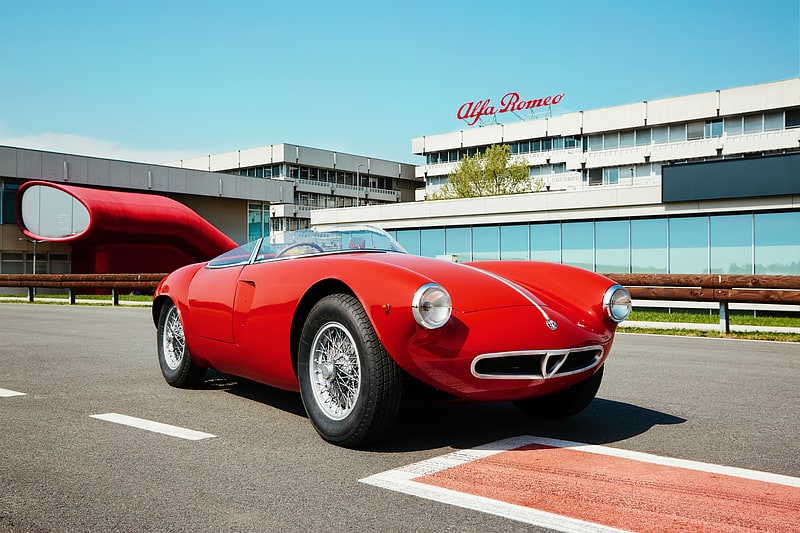
Also known as: Museo storico Alfa Romeo
Showcase for the Italian automaker. Museo Storico Alfa Romeo is Alfa Romeo's official museum, located in Arese, and displaying a permanent collection of Alfa Romeo cars and engines.
After being closed down in 2011, the museum reopened in June 2015.[14]
Address: Viale Alfa Romeo, 20020 Arese
Cimitero Monumentale
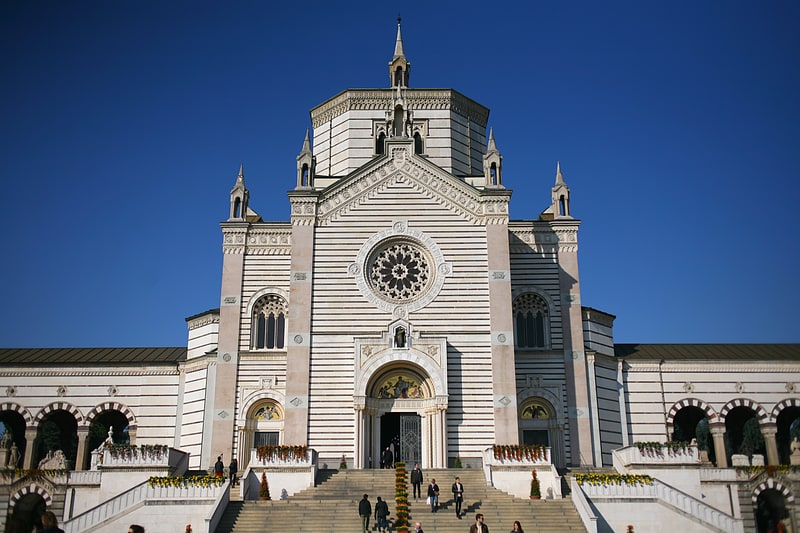
1866 burial ground with sculptures. The Cimitero Monumentale is one of the two largest cemeteries in Milan, Italy, the other one being the Cimitero Maggiore. It is noted for the abundance of artistic tombs and monuments.
Designed by the architect Carlo Maciachini (1818–1899), it was planned to consolidate a number of small cemeteries that used to be scattered around the city into a single location.
Officially opened in 1866, it has since then been filled with a wide range of contemporary and classical Italian sculptures as well as Greek temples, elaborate obelisks, and other original works such as a scaled-down version of the Trajan's Column. Many of the tombs belong to noted industrialist dynasties, and were designed by artists such as Adolfo Wildt, Giò Ponti, Arturo Martini, Agenore Fabbri, Lucio Fontana, Medardo Rosso, Giacomo Manzù, Floriano Bodini, and Giò Pomodoro.
The main entrance is through the large Famedio, a massive Hall of Fame-like Neo-Medieval style building made of marble and stone that contains the tombs of some of the city's and the country's most honored citizens, including that of novelist Alessandro Manzoni.
The Civico Mausoleo Palanti designed by the architect Mario Palanti is a tomb built for meritorious "Milanesi", or citizens of Milan. The memorial of about 800 Milanese killed in Nazi concentration camps is located in the center and is the work of the group BBPR, formed by leading exponents of Italian rationalist architecture that included Gianluigi Banfi.
The cemetery has a special section for those who do not belong to the Catholic religion and a Jewish section.
Near the entrance there is a permanent exhibition of prints, photographs, and maps outlining the cemetery's historical development. It includes two battery-operated electric hearses built in the 1920s.[15]
Address: Piazzale Cimitero Monumentale, 20154 Milano (Zona 8)
Antique Furniture & Wooden Sculpture Museum

Also known as: Museo dei mobili e delle sculture lignee
The Antique Furnishings & Wooden Sculpture Museum of Milan is located on the first floor of the Sforza Castle ducal courtyard and it is part of the Sforza Castle's Civic Museum complex.
The itinerary is chronologically arranged from the 14th century to the modern times with a particular attention for the Italian and lombardic furniture history. One of the most important artifacts exposed in the museum is the Chamber of Griselda: a wooden room reconstructed with fifteenth century detached frescoes to create a scale replica of how it looked in its original location in the Roccabianca Castle near Parma.
The Italian 20th century furniture and the italian design are well represented by furniture signed Alberto Issel, Carlo Bugatti and Ettore Sottsass, while the 18th-century Italian school of cabinetmakers are well represented by several cabinets signed Giuseppe Maggiolini. Are also exposed religious furnishing from 16th–18th century and furniture of the noble families of Milan.
Several wooden sculptures and various decorative items, such pottery or tableware including a tea set designed by Gio Ponti, are also displayed in the museum.[16]
Address: Piazza Castello, Milan (Centro Storico)
Palazzo dei Giureconsulti
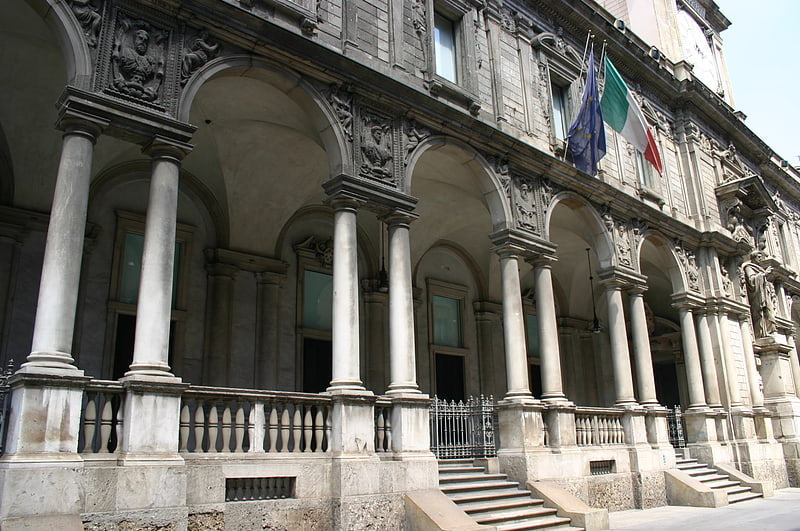
Conference hall in Milan, Italy. The Giureconsulti Palace, also known as Palazzo Affari ai Giureconsulti or simply Palazzo Affari, is a 16th-century building of Milan, Italy. It is located in Piazza Mercanti, former city centre in the Middle Ages.
The construction of the palace began in 1562 on a design by architect Vincenzo Seregni. The palace replaced an older one, which was demolished. The overall style of the building and its decoration is Manneristic.
A pre-existing tower by Napo Torriani was preserved and adapted to the new architecture as a bell tower; the bell, which was nicknamed "Zavataria" after Zavatario della Strada who donated it, rang to announce such events as public executions. The bell was later replaced by a clock.
The building originally served as the seat of the Collegio dei Nobili Dottori, a school for aspiring politicians and lawyers. After the 18th century it was used for other functions, including as a stock exchange, as the seat of the telegraph company, as the seat of the Popolare di Milano bank, and finally as the seat of the Chamber of Commerce. Today, the building is still the property of the Chamber of Commerce.
The palace was severely damaged by the bombings of World War II but was thoroughly restored in the 1980s by Gianni Mezzanotte. During this restoration, the palace was enhanced with hi-tech equipment, such as modern communication lines and multimedia appliances, to create a prestigious multi-functional venue to accommodate events, conferences, and such. It was at this time that the new denomination of "Palazzo Affari" was adopted, although the Palace is still largely known by its former name.[17]
Address: Piazza Mercanti 2, 20122 Milan (Centro Storico)
Teatro alla Scala
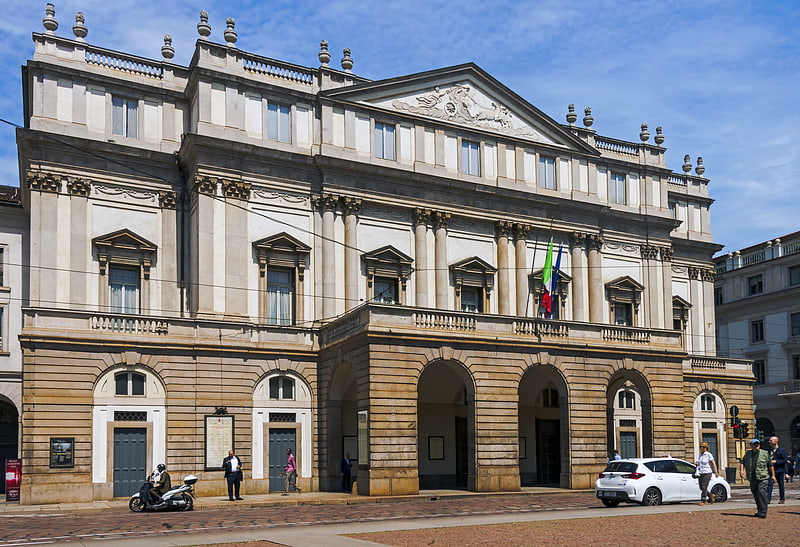
Grand opera house for Italian classics. La Scala is a famous opera house in Milan, Italy. The theatre was inaugurated on 3 August 1778 and was originally known as the Nuovo Regio Ducale Teatro alla Scala. The premiere performance was Antonio Salieri's Europa riconosciuta.
Most of Italy's greatest operatic artists, and many of the finest singers from around the world, have appeared at La Scala. The theatre is regarded as one of the leading opera and ballet theatres globally. It is home to the La Scala Theatre Chorus, La Scala Theatre Ballet, La Scala Theatre Orchestra, and the Filarmonica della Scala orchestra. The theatre also has an associate school, known as the La Scala Theatre Academy (Italian: Accademia Teatro alla Scala), which offers professional training in music, dance, stagecraft, and stage management.[18]
Address: Via Filodrammatici 2, 20121 Milano (Centro Storico)
Museo Nazionale Scienza e Tecnologia Leonardo da Vinci
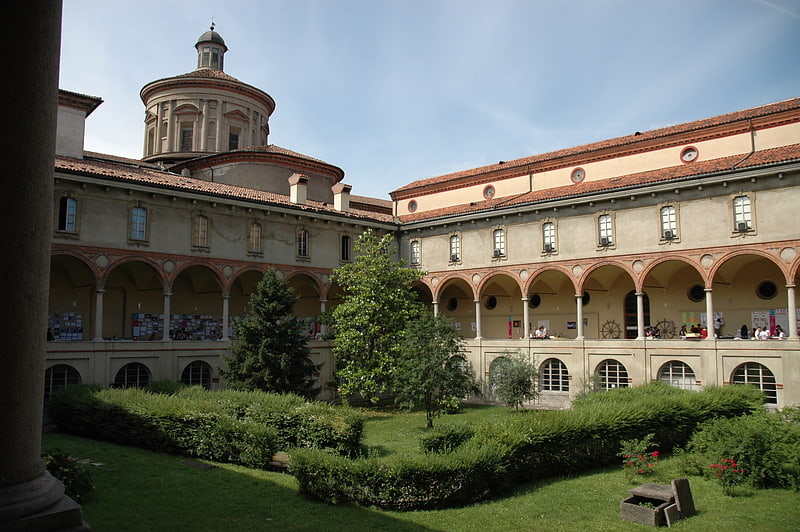
Also known as: Museo nazionale della scienza e della tecnologia Leonardo da Vinci
Museum in Milan, Italy. Museo Nazionale Scienza e Tecnologia Leonardo da Vinci in Milan, dedicated to painter and scientist Leonardo da Vinci, is the largest science and technology museum in Italy. It was opened on 5 February 1953 and inaugurated by Prime Minister Alcide De Gasperi.
The museum, in the ancient monastery of San Vittore al Corpo in Milan, is divided into seven main departments:
- Materials
- Transport
- Energy (including Thermal power station Regina Margherita)
- Communication
- Leonardo da Vinci, Art & Science
- New Frontiers
- Science for young people
Each of these departments have laboratories especially for children and young students. The Transport section is made up of four different parts: air, rail, water and Submarine Enrico Toti-S-506.[19]
Address: Via San Vittore, 21, 20123 Milano (Centro Storico)
Castello Cova
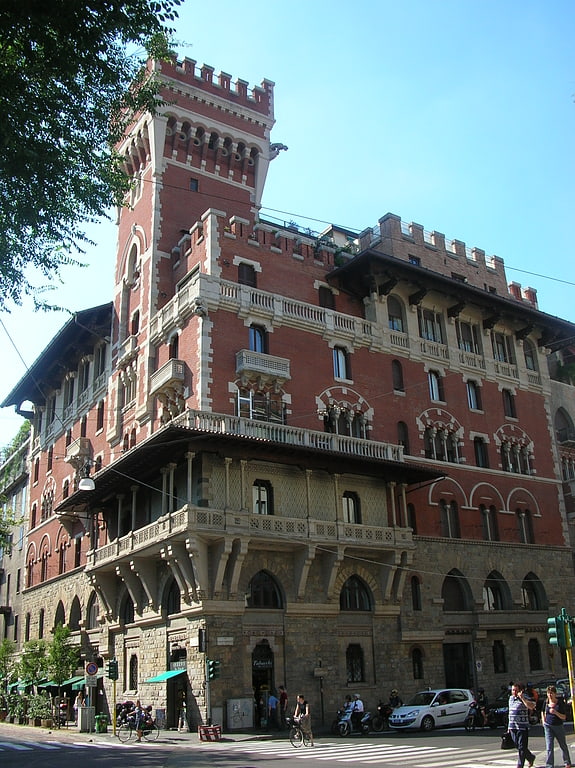
Castle in Milan, Italy. Castello Cova, also known as Palazzo Viviani Cova is a historical building in Milan, northern Italy, close to the Basilica of Sant'Ambrogio. Built between 1910 and 1915 on a design by architect Adolfo Coppedè, it is an example of Gothic Revival architecture, with guelph-style merlons decorating the external rusticated walls as well as the middle-ages styled tower. The tower of Castello Cova was reportedly an inspiration for the architects of the Velasca Tower, a landmark skyscraper in the centre of Milan. The Pusterla di Sant'Ambrogio, an ancient postern of the Medieval walls of Milan facing Castello Cova, was recreated in the late 1930s in a style that matches the Revival style of the Castello.[20]
Palazzina Appiani
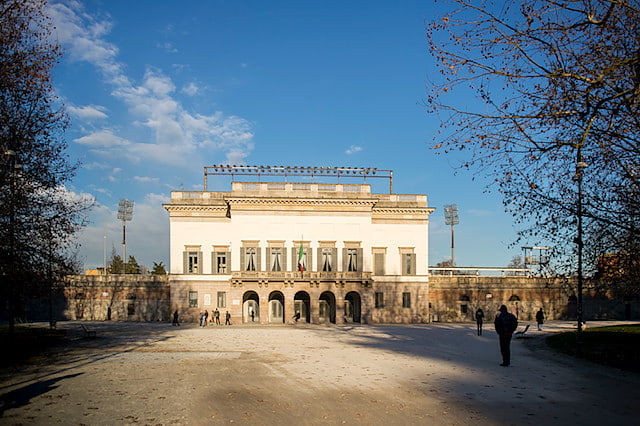
Palazzina Appiani is a historical building located in Milan, northern Italy. It was built as the entrance hall of the arena at the beginning of the 19th century by the French, who occupied Milan in 1796. Its original function was to be the official gallery and guest residence to host Napoleon's family during his public appearances. It is located in Parco Sempione, the biggest park in the city, which also comprises the Sforza Castle and the Arch of Peace. Adjacent to the Arena Civica, the Palazzina is now entrusted to FAI – Fondo Ambiente Italiano.[21]
Sforza Castle Pinacoteca
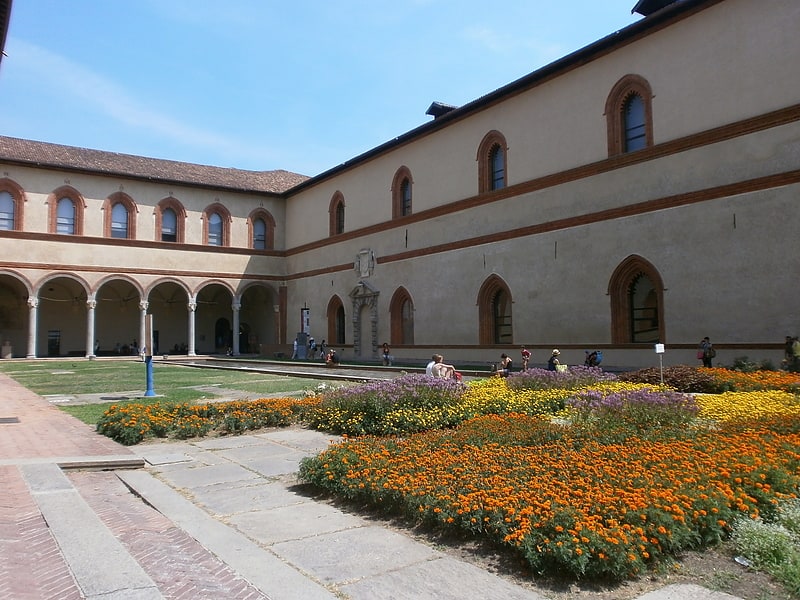
Also known as: Pinacoteca del Castello Sforzesco
Art gallery in Milan. The Pinacoteca del Castello Sforzesco is an art gallery in the museum complex of the Castello Sforzesco in Milan, northern Italy.[22]
Address: Piazza Castello, 20121 Milan (Centro Storico)
Casa Guazzoni
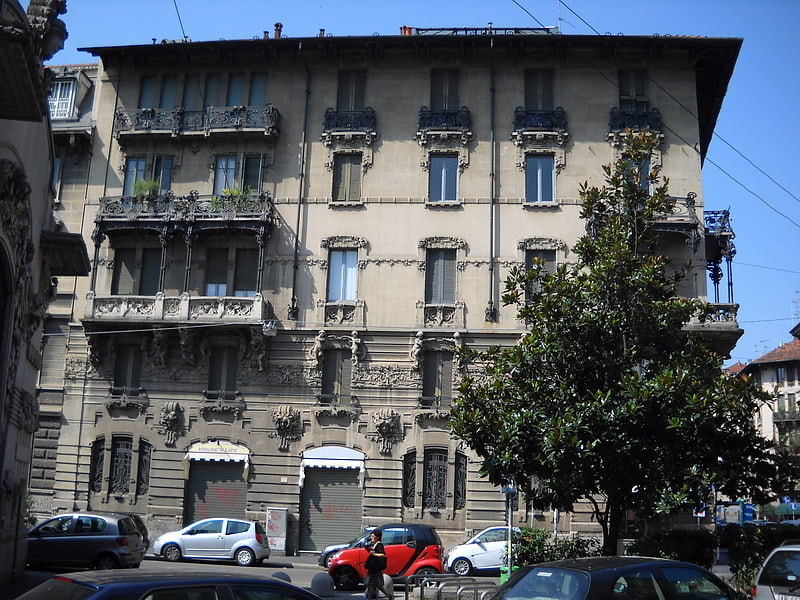
Tourist attraction in Milan, Italy. Casa Guazzoni is a building at via Malpighi 12 in Milan in the Liberty style, or Italian Art Nouveau.[23]
Acquario Civico

Also known as: Acquario civico di Milano
Aquarium in Milan, Italy. The Civic Aquarium of Milan is an aquarium in Milan, Italy, and the third oldest aquarium in Europe. Built in 1906 on the occasion of the Milan International, It is the only surviving building from the event. Sited on the edge of Sempione Park, the aquarium has over 100 different types of underwater life located in several tanks with a particular attention for the fishes and aquatic vegetation of the Italian seacoasts, lakes, and rivers.
The facade of the aquarium includes a Neptune statue, the Roman god of water and the sea, created by sculptor Oreste Labò.
The aquarium library, which is open to the public, has one of Italy’s most prestigious collection of marine biology publications.[24]
Address: Viale G.Gadio 2, 20100 Milan (Centro Storico)
Basilica of Sant'Ambrogio

Also known as: Basilica di Sant'Ambrogio
1100s church with a columned courtyard. The Basilica of Sant'Ambrogio is a church in the center of Milan, northern Italy.[25]
Address: Piazza Sant'Ambrogio, 15, 20123 Milano (Centro Storico)
Museo d'Arte Antica
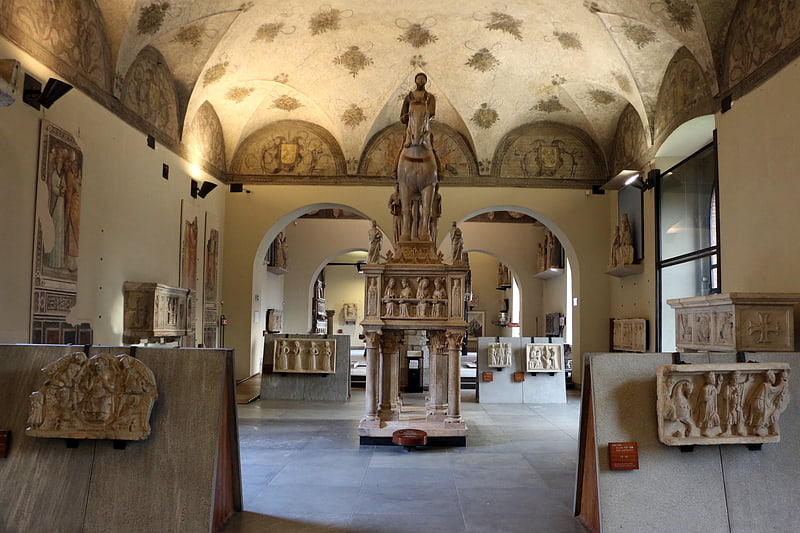
Also known as: Museo d'arte antica
Museum in Milan, Italy. The Museo d'Arte Antica is an art museum in the Castello Sforzesco in Milan, in Lombardy in northern Italy. It has a large collection of sculpture from late antiquity and the medieval and Renaissance periods. The various frescoed rooms of the museum house an armoury, a tapestry room, some funerary monuments, Michelangelo's Rondanini Pietà and two medieval portals.
The Sala Verde ('green room') displays 15th- and 16th-century sculptures, the collection of arms of the Castello Sforzesco and the Portale del Banco Mediceo, a gate removed from Via Bossi. The collection of arms, in the second part of the room, displays sculptures, armour, swords and firearms in chronological sequence from the Middle Ages to the 18th century.
The Sala delle Asse, designed and frescoed by Leonardo da Vinci at the request of Lodovico il Moro, represents the Sforza period of Milan.[26]
Address: Castello Sforzesco, 20121 Milan (Centro Storico)
Galleria d'Arte Moderna
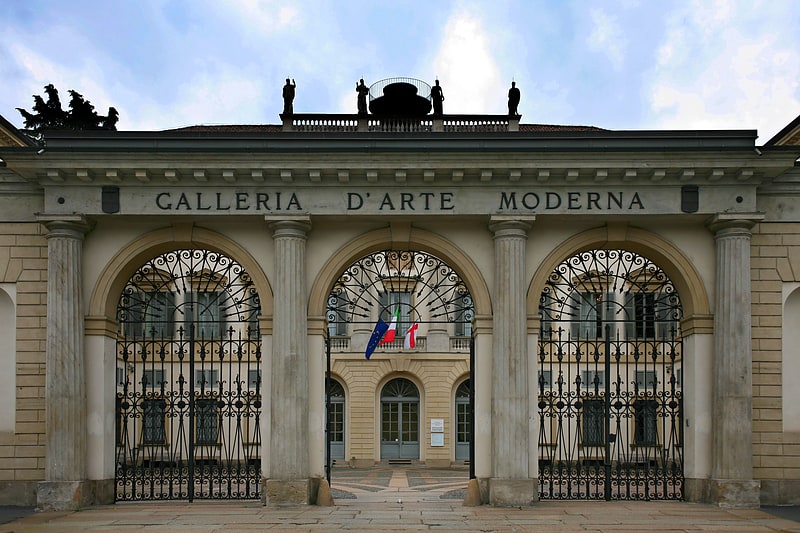
Museum in Milan, Italy. The Galleria d'Arte Moderna is a modern art museum in Milan, in Lombardy in northern Italy. It is housed in the Villa Reale, at Via Palestro 16, opposite the Giardini Pubblici. The collection consists largely of Italian and European works from the 18th to the 20th centuries.
The museum has works by Francesco Filippini, Giuseppe Ferrari, Giovanni Fattori, Silvestro Lega, Giovanni Boldini, Vincent van Gogh, Édouard Manet, Paul Gauguin, Paul Cézanne, Pablo Picasso, Giacomo Balla, Umberto Boccioni, Francesco Hayez, Giovanni Segantini, Giuseppe Pellizza da Volpedo and Antonio Canova, among others. It has received donations from Milanese families including Treves, Ponti, Grassi and Vismara.
After the Second World War the twentieth-century works in the collection were moved to the Padiglione d'Arte Contemporanea, built in 1955 on the site of the former stables of the palace, which had been destroyed by wartime bombing.
In 2011 some works were moved to the Museo del Novecento; these included Bambina che corre sul balcone by Giacomo Balla (1912), Uomo che dorme by Renato Guttuso (1938) and The Fourth Estate by Pellizza da Volpedo (1901).
In recent years the Modern Art Gallery has started a parallel program of temporary exhibitions, including a solo presentation of Tino Sehgal and a selection of drawings from the UBS Art Collection curated by Francesco Bonami.[27]
Address: Via Palestro, 16, 20121 Milano (Centro Storico)
Chiaravalle Abbey
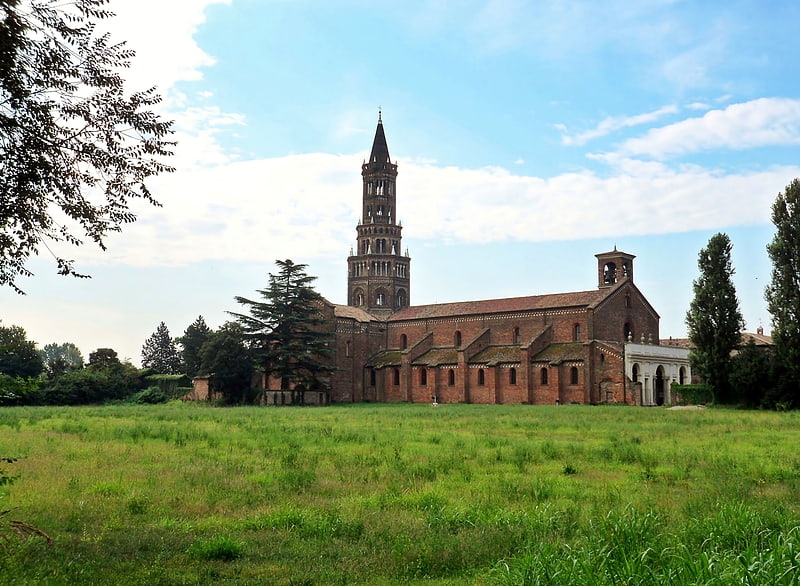
Also known as: Abbazia di Chiaravalle
Cistercian monastery built in 1135. The Abbey of Santa Maria di Rovegnano is a Cistercian monastic complex in the comune of Milan, Lombardy, northern Italy. The borgo that has developed round the abbey was once an independent commune called Chiaravalle Milanese, now included in Milan and referred to as the Chiaravalle district.
The abbey was founded on 22 January 1135 as a daughterhouse of Clairvaux; it is one of the first examples of Gothic architecture in Italy, although maintaining some late Romanesque influences.[28]
Palazzo Marino
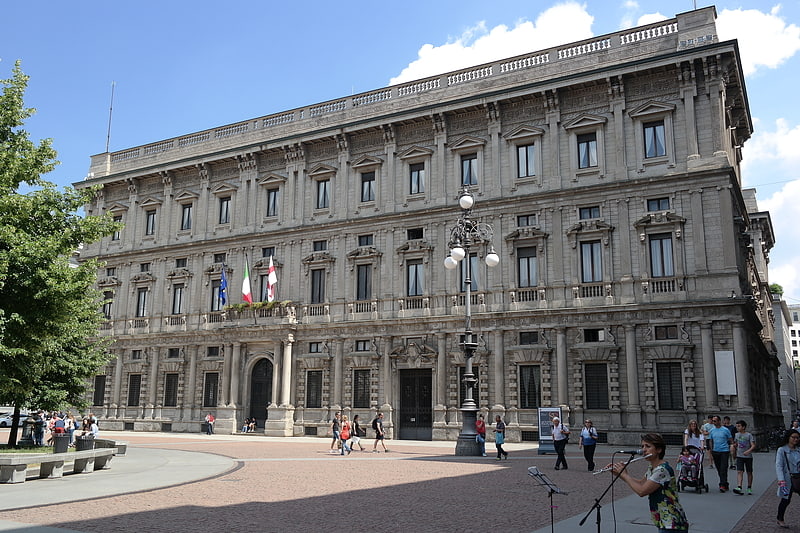
Large 16th-century palace with tours. Palazzo Marino is a 16th-century palace located in Piazza della Scala, in the centre of Milan, Italy. It has been Milan's city hall since 9 September 1861. It borders on Piazza San Fedele, Piazza della Scala, Via Case Rotte and Via Tommaso Marino.
The palace was built for, and is named after, the Genoan trader and banker Tommaso Marino. It became a property of the State in 1781.[29]
Address: Piazza della Scala 2, 20121 Milan (Centro Storico)
Naviglio Pavese
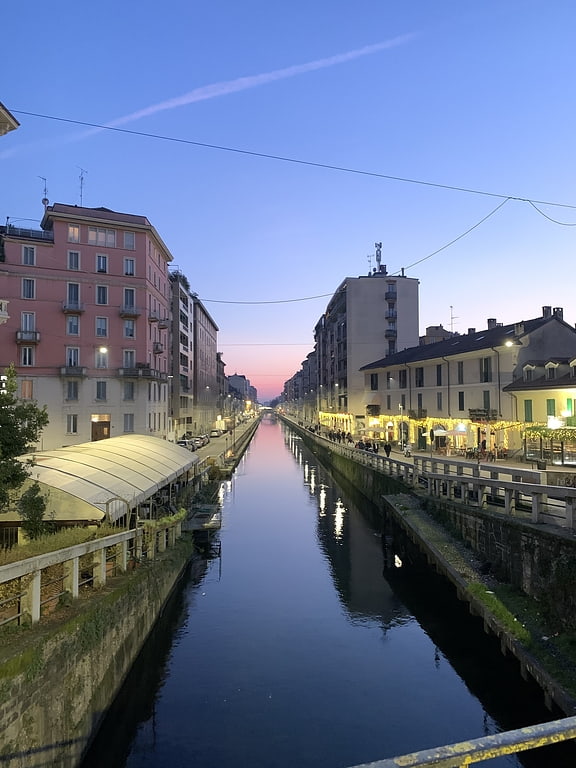
Canal in Italy. The Naviglio Pavese is one of the canals making up the Navigli system in Lombardy, Italy. Once navigable, it is 33 km long and connected the city of Milan to Pavia, and through a flight of six locks to the River Ticino.
Construction started in 1564, but was interrupted 20 years later just outside Milan due to technical problems: the lock there is still called Conca Fallata, which in Italian means "Failed Lock". Building resumed at the beginning of the 19th century and was completed in 1819.
The canal was finally closed to navigation in the 1960s, but work has recently started to restore it back to full navigation, a link in the project to connect Switzerland to Venice by inland waterway.[30]
Velodromo Vigorelli

Also known as: Velodromo Maspes-Vigorelli
Stadium in Milan, Italy. Velodromo Vigorelli is a 397-metre semi-covered velodrome in Milan, Italy. It is currently used mostly for American football events. The stadium holds 9,000 people and was built in 1935 by Vigorelli Cycles. It was burned down during the second world war after bombing of Milan by the RAF but then rebuilt.
The stadium was home to the hour record from 1935 to 1967 and the one-hour tandem record of Ernest Mills and Bill Paul from 1937 to 2000. It hosted the UCI Track Cycling World Championships in 1939, 1951, 1955 and 1962. After years of neglect and planned demolitions, campaigning by local enthusiasts led to the approval by local authorities in March 2014 of plans to renovate the velodrome.
The stadium has also hosted music events, including the Beatles' concert on June 24, 1965. It was the site of a concert by English rock band Led Zeppelin which took place during the band's 1971 European tour, well known for its descent into a violent riot between concert attendees and the local police.[31]
Address: Via Giovanni da Procida, 26, 20149 Milano (Zona 8)
Villa Belgiojoso Bonaparte
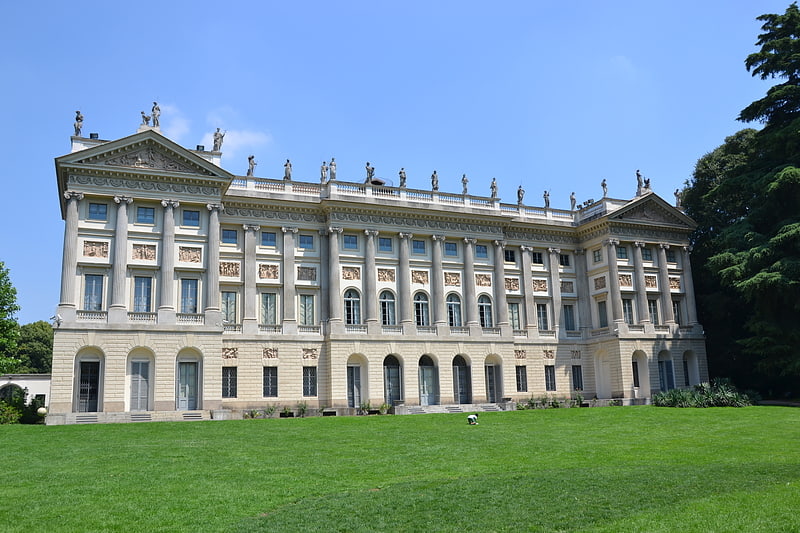
Also known as: Villa Reale di Milano
Historical place in Milan, Italy. The Villa Belgiojoso Bonaparte, also known as Villa Reale and formerly called Villa Comunale, is a palace in Milan, in Lombardy in northern Italy. It was built between 1790 and 1796 as the residence of Count Ludovico Barbiano di Belgiojoso. The villa is in Neoclassical style, and was designed by Leopoldo Pollack. The main entrance is on via Palestro, facing the Giardini Pubblici of Porta Venezia, the eastern gate of the city.
During the Kingdom of Italy it became the residence of Viceroy Eugene de Beuharnais and his family
In 1920 the villa came under the ownership of the Comune of Milan; in 1921 it became the home of the Galleria d'Arte Moderna.
Beside the villa is the Padiglione d'Arte Contemporanea, an exhibition space for contemporary art, which was built in 1955 on the site of the former stables of the palace, destroyed by wartime bombing.
The gardens of the villa, in English style with an artificial lake, were laid out by Leopoldo Pollack.[32]
Address: Via Palestro, 20121 Milano (Centro Storico)
Memoriale della Shoah

Non-profit organization in Milan, Italy. The Memoriale della Shoah is a Holocaust memorial at the Milano Centrale railway station commemorating the Jewish prisoners deported from there during the Holocaust in Italy. Jewish prisoners from the San Vittore Prison, Milan, were taken from there to a secret underground platform, Platform 21, to be loaded on freight cars and taken on Holocaust trains to extermination camps, either directly or via other transit camps. Twenty trains and up to 1,200 Jewish prisoners left Milan in this fashion to be murdered, predominantly at Auschwitz.[33]
Palazzo Carminati
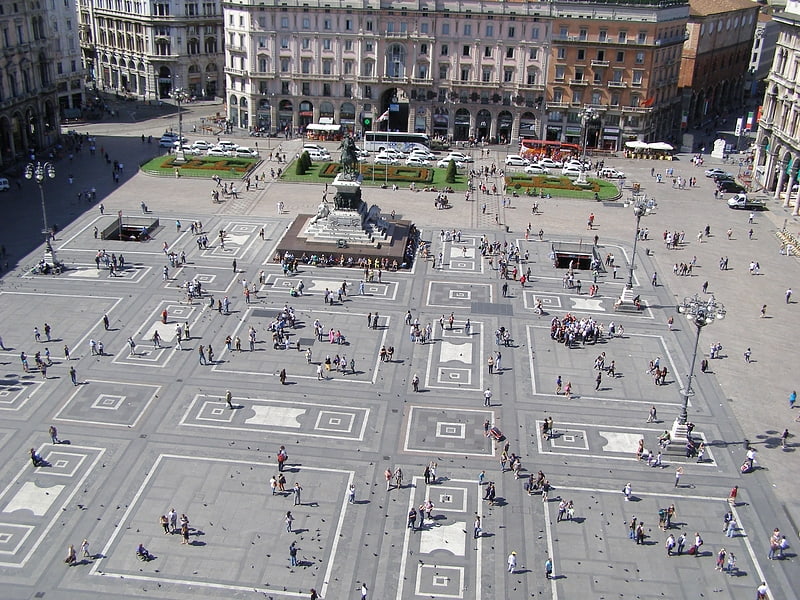
Palace. Palazzo Carminati is the palace facing the Milan Cathedral on the West side of Piazza del Duomo, the central plaza of Milan, Italy. The palace is named after a famous Cafè, the Carminati. It was built in the late 1860s as private home of a well known Milanese silver manufacturer, Giacomo Cesati.
In the twentieth century, the palace became a landmark of Milan (and a symbol of the city's economic growth) because of the large neon advertising signs that were affixed to its façade, with an overall visual effect that has been compared to that of New York City's Broadway and Times Square or London's Piccadilly Circus. Advertising signs first appeared on the façade of the palace in the 1920s, but they were especially rich and colorful in the 1960s and 1970s. Besides being known to the Milanese, the façade of the palace became familiar to everyone in Italy through a number of appearances in films and television, including a spot for the Cynar liquor.
The signs were eventually removed by Milan's major Gabriele Albertini in 1999, as a consequence of a campaign aimed at promoting the plaza's "dignity", although this decision has since been frequently criticized.[34]
Palazzo della Ragione
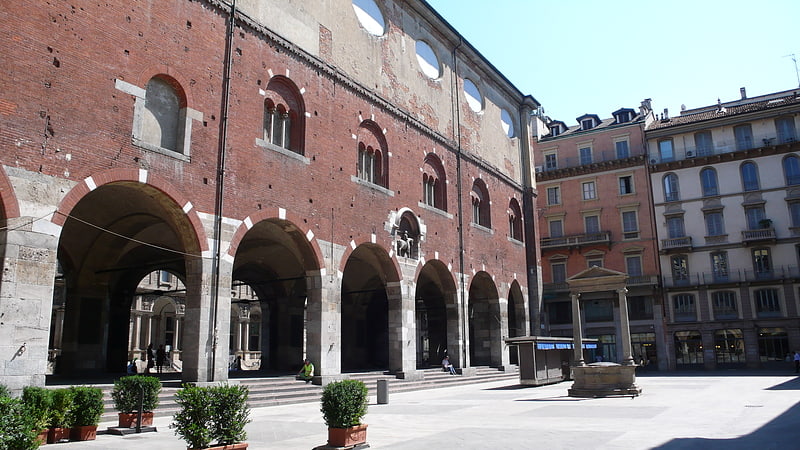
Medieval palace with arcades and frescoes. The Palazzo della Ragione is a historic building of Milan, Italy, located in Piazza Mercanti, facing the Loggia degli Osii. It was built in the 13th century and originally served as a broletto as well as a judicial seat. As it was the second broletto to be built in Milan, it is also known as the Broletto Nuovo.
The palace is decorated with a relief representing Oldrado da Tresseno, and the bas relief of the scrofa semilanuta, which has been object of much controversy among scholars of the foundation and origins of Milan.[35]
Address: Via Mercanti 7, 20123 Milan (Centro Storico)